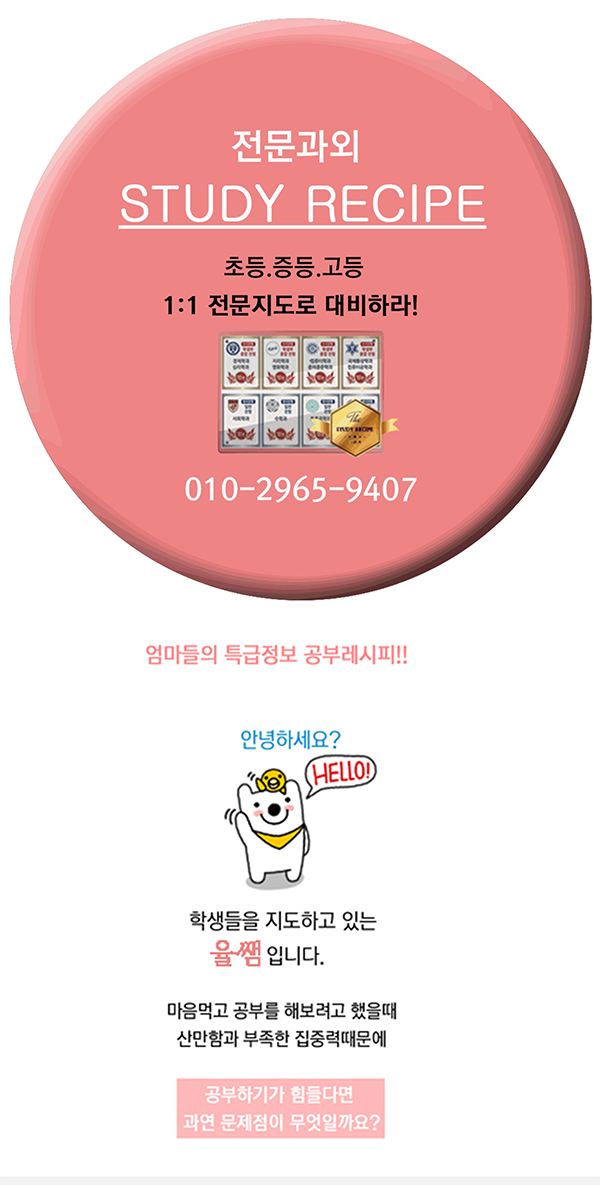가산동수학 education methods can be a response to the erosion and loss of indigenous knowledge and language through the processes of colonialism. Furthermore, it can enable indigenous communities to "reclaim and revalue their languages and cultures, and in so doing, improve the educational success of indigenous students."[29] Informal learning Main article: Informal learning Informal learning is one of three forms of learning defined by the Organisation for Economic Co-operation and Development (OECD). Informal learning occurs in a variety of places, such as at home, work, and through daily interactions and shared relationships among members of society. For many learners, this includes language acquisition, cultural norms, and manners. In informal learning, there is often a reference person, a peer or expert, to guide the learner. If learners have a personal interest in what they are informally being taught, learners tend to expand their existing knowledge and conceive new ideas about the topic being learned.[30] For example, a museum is traditionally considered an informal learning environment, as there is room for free choice, a diverse and potentially non-standardized range of topics, flexible structures, socially rich interaction, and no externally imposed assessments.[31] While informal learning often takes place outside educational establishments and does not follow a specified curriculum, it can also occur within educational settings and even during formal learning situations. Educators can structure their lessons to directly utilize their students informal learning skills within the education setting.[30] In the late 19th century, education through play began to be recognized as making an important contribution to child development.[32] In the early 20th century, the concept was broadened to include young adults but the emphasis was on physical activities.[33] L.P. Jacks, also an early proponent of lifelong learning, described education through recreation: "A master in the art of living draws no sharp distinction between his work and his play, his labour and his leisure, his mind and his body, his education and his recreation. He hardly knows which is which. He simply pursues his vision of excellence through whatever he is doing and leaves others to determine whether he is working or playing. To himself, he always seems to be doing both. Enough for him that he does it well."[34] Education through recreation is the opportunity to learn in a seamless fashion through all of life's activities.[35] The concept has been revived by the University of Western Ontario to teach anatomy to medical students.[35] Self-directed learning Main article: Autodidacticism Autodidacticism (also autodidactism) is self-directed learning. One may become an autodidact at nearly any point in one's life. Notable autodidacts include Abraham Lincoln (U.S. president), Srinivasa Ramanujan (mathematician), Michael Faraday (chemist and physicist), Charles Darwin (naturalist), Thomas Alva Edison (inventor), Tadao Ando (architect), George Bernard Shaw (playwright), Frank Zappa (composer, recording engineer, film director), and Leonardo da Vinci (engineer, scientist, mathematician).[citation needed] Evidence-based Main article: Evidence-based education Evidence-based education is the use of well designed scientific studies to determine which education methods work best. It consists of evidence-based teaching and evidence-based learning. Evidence-based learning methods such as spaced repetition can increase rate of learning.[36] The evidence-based education movement has its roots in the larger movement towards evidence-based-practices.[citation needed] Open learning and electronic technology Main articles: Open education and Educational technology Many large university institutions are now starting to offer free or almost free full courses such as Harvard, MIT and Berkeley teaming up to form edX. Other universities offering open education are prestigious private universities such as Stanford, Princeton, Duke, Johns Hopkins, the University of Pennylvania, and Caltech, as well as
카테고리 없음


